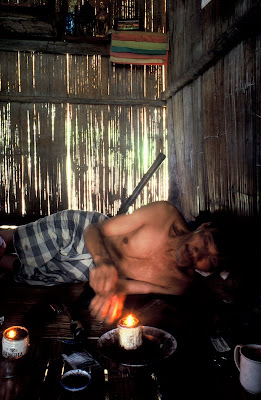Big Saht, little coke, cute cooker
I always hear jeaos described as a dipping sauce, I’d say more accurately they’re a mopping up sauce, as in when you use the sticky rice to mop some up. Jeao Kai is exactly that kind of jeao. It’s dry, drier than say potato salad, but it none the less sticks to the rice well especially when smushed. (smush: to smash and mush at the same time)
Some of the ingredients, that white stuff ain't salt
I never seem to hear of people eating or making jeoa kai despite it being so easy and being made from such common ingredients. It’s another one of those dishes passed down from great grandpa Kahman, probably an improvisation from times in the Soviet Union spent without access to padek, or maybe just a Lao adaptation of an egg salad.
the greens
It’s as simple as boiling an egg.
Boil a half dozen eggs or so, cool, pulverize some hot peppers in the bottom of the coke add just a couple green onions, dent them, throw in salt, bang nua, fish sauce, then the cut up eggs, stir, then lots of mint and a little cilantro, voila.
I like it with mint on the side also and thick coffee in those cheap plastic mugs from Thailand


